A WONDERFUL DAY TRIP FROM PARIS – CHÂTEAU DE CHANTILLY
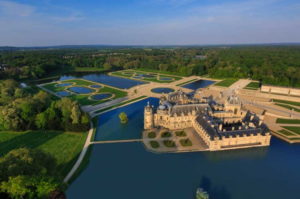
Although France has so many impressive châteaux scattered throughout the country, there is one that never fails to take your breath away. The Château de Chantilly in Picardy is one of the most spectacular in France, set in a vast estate of 7,800 hectares. At less than 50kms from the centre of Paris, armed with your Navigo Pass it’s easily accessible for a perfect day out.

The Château that we see today is not the original on the site. The earlier château, seat of the Lords of Senlis (Senlis is only 11km from Chantilly) was constructed between the 10th and 14th centuries, and nothing remains of that, nor of the one that followed. Typical of so many châteaux, the whole estate has had a chequered history of ownership by princely dynasties, rebuilding and additions through the centuries.

Today’s site consists of two attached buildings: the Petit Château, built for Anne de Montmorency in an adaptation of Italian Renaissance style on its own island in the moat but connected to the Grand Château, the original of which was destroyed in 1799 during the Revolution.

In 1632, after the death of Henri ll de Montmorency, the Petit Château passed to his nephew, Louis ll de Bourbon-Condé, known as the Grand Condé. Louis was also the cousin of the King, and inherited the property through his mother, Charlotte Marguerite de Montmorency.
The last of the Bourbon-Condé family, Louis-Antoine, duc d’Enghien, born at the Château in 1772, was executed in 1804 by firing squad in the moat of the Château de Vincennes on the orders of Napoleon Bonaparte.
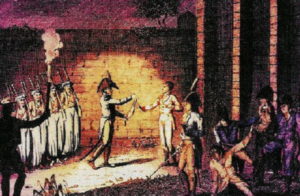
He had first been kidnapped then officially arrested under suspicion of having been involved in a conspiracy to assassinate Napoleon and aiding Britain against France. While it’s indisputable that for years he had been fighting against the Revolution, it is now considered highly dubious that he was guilty of this offence.
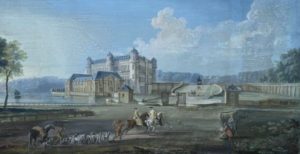
During the Revolution, the Château’s incredible collections were seized and transported to the Louvre, and the property was turned into a prison for a few years. It was sold in 1799, the great château was largely demolished and the magnificent park ravaged.

In 1830 the Château (and a huge fortune) passed to the godson of Louis-Henri-Joseph de Bourbon, Henri d’Orléans, duc d’Aumale, the 5th son of Louis-Philippe, the last King of France. Regarded as the greatest collector of his time, the duc d’Aumale rebuilt the Grand Château to house his vast collection of art and treasures. An interesting character, he had opted for a military career as a young man and began his army career in Algeria. He ultimately became Governor General of Algeria in 1847, but never forgot Chantilly.
For a time, the entire property was confiscated from the Condé family between 1853 and 1872, and at one stage was owned by Coutts, the English bank.
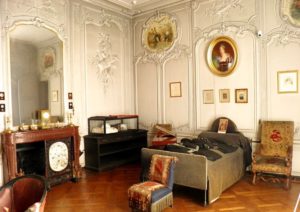
When the Napoleonic era finally ended with the reign of Napoleon lll in 1871, the duc d’Aumale returned to France from exile in Twickenham near London, where he had fled following the 1848 Revolution when the monarchy was abolished. Now a widower who had also lost his two sons at the ages of 18 and 21, he had the Château partially restored, and managed to recover some of the collections from the Louvre.
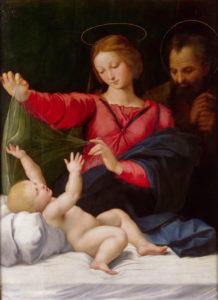
When he died in May 1897, with no direct living descendants, he bequeathed the entire domaine to the State, specifically the Institut de France of which he was a member, and instructed that none of the paintings were to be moved, rearranged or loaned to other museums. This stipulation would ultimately make Chantilly the second largest French art gallery after the Louvre. The series of rooms housing his collection known as the Condé Museum, are the showcase for the duc’s collection which comprise more than 3,000 manuscripts, 4,000 drawings and 700 paintings.

The Chantilly art collection contains some of the world’s greatest paintings, from works by Fra Angelico, Giotto, Botticelli, Raphael, Van Dyke, Watteau, Delacroix, Titan, Ingres and Delacroix, among many other great masters. As you’d expect, there are countless royal portraits, while Italian, Flemish, French and Renaissance paintings vie for attention. There are wonderful tapestries, stained glass windows, and an extraordinary library brimming with rare and precious volumes. One of the most famous books in the collection, the ‘Tres Riches Heures’ of Jean, duc de Berry, is nowadays only on view in digital format.

The Gallery of Painting and the Rotunda are the heart of the Condé Museum. The works are housed in rooms according to their era or theme, such as the Giotto Room, The Tribune (reminiscent of the Tribuna in the Uffizi Gallery, Florence) and The Santuario, which houses works by Raphael, Botticelli and Lippi.
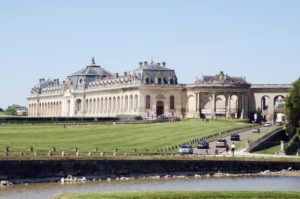
Regarded by many as the pièce de résistance of Chantilly, the Grandes Écuries (Great Stables) are the largest stables in Europe. Absolutely magnificent, they are a château in their own right, a veritable horses’ palace, with stunning architectural details. A masterpiece of 18th century architecture built for Louis-Henri de Bourbon, the 7th Prince de Condé.
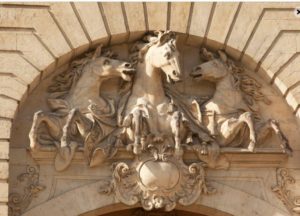
When you see the complex, it’s not difficult to believe the story that the prince loved horses, believed in reincarnation, and was convinced he would come back as a horse in a second life. Whenever we’ve gone to Chantilly, we’ve noticed that many first time visitors mistake the Great Stables block for the Château itself, and it’s easy to understand why!
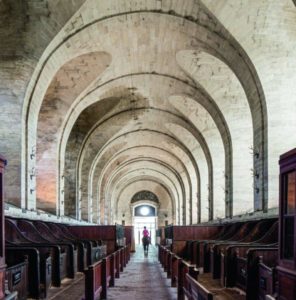
The Great Stables are unmissable, built to house 240 horses and 300 hunting dogs as well as grooms and equipment. Visitors are able to visit the horses in their palatial accommodation, where beautiful touches and finishes including Chippendale timberwork appear in multiple rooms—the duc d’Aumale was a great admirer of British art and craftsmanship.
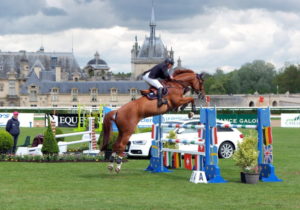
Fifteen rooms of the stables now house the Museum of the Horse, inaugurated in 2013 in the Cour des Remises. As a museum of both art and ethnology, it presents the relationship between humans and horses since the beginnings of civilisation. Objects range from 6th-7th century Tang Dynasty terracotta horses, a traditional Sicilian cart painted with scenes of Sicilian and Italian history, paintings of 19th century horse-racing at Chantilly, exquisite Bohemian glass depicting hunting scenes and a beautiful, rare 15th century illuminated manuscript on the topic of Nature and Virtue of Horses.
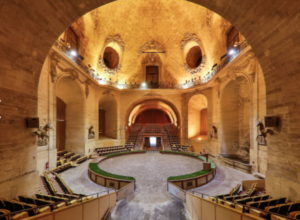
The Great Stables stages equestrian shows throughout the year devoted to the art of haute-école horse training, which has contributed to Chantilly’s international reputation for over 30 years. Performed under the majestic dome of the Great Stables, the shows combine poetic movement, acrobatics and humour, displaying the close bond between human and horse.
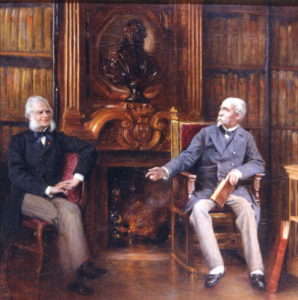
The duc d’Aumale devoted his entire life to his two passions: fine art and his love of books. In a letter to a friend he admits: “I think I’m suffering from bibliomania!” He had a magnificent library (Cabinet des Livres), which he referred to as his ‘reading room’, designed especially to house his extraordinary book and manuscript collection. A large, functional room, with two levels and a gallery, the iron shelving units are trimmed with leather to minimise contact between the book bindings and the shelves. He was constantly on the look-out for rare and interesting books and one of his advisors was the director of the British Library, and another was the General Administrator of the National Library of France. It’s the second largest library in France after the Bibliothèque Nationale.
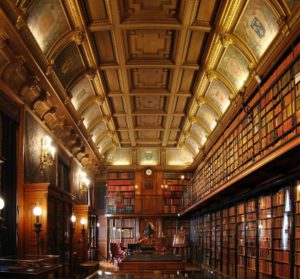
Of the more than 60,000 volumes in the Chantilly collection, almost 19,000 are exhibited in the Reading Room, including 1,500 manuscripts (the oldest dates from the 11th century) and 17,500 printed documents on the subjects of universal knowledge.
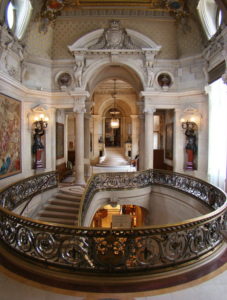
The so-called Large Suites, located on the first floor of the Château, were used as reception rooms by the Princes of Bourbon-Condé and are wonderful examples of the formal décor fashionable in the 18th century.

Although these rooms were looted during the Revolution, the duc d’Aumale acquired furniture and decorative objects from various royal châteaux supplemented by some of his own inherited pieces, in order to restore and recreate the opulence of the original spaces.
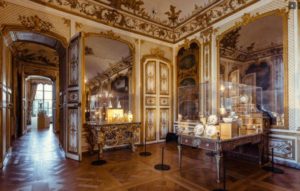
Among the various rooms is a Gallery of Battles, the most spacious of the reception rooms. It was decorated at the end of the 17th century for the Grand Condé, and exhibits a series of eleven paintings illustrating his principal military victories.
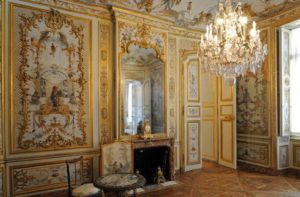
One of the most original rooms is the beautiful Grande Singerie. This room echoes the penchant for Asia that was fashionable in the 18th century, and is decorated with murals depicting monkeys (singes) performing human activities, making fun of humankind and their foibles.
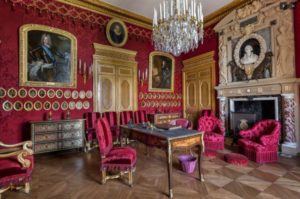
There is also a Music Room, a so-called Large Corner Room where the Prince de Condé held audiences, his bedroom, an antechamber, and a Guard Room.
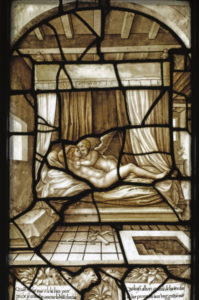
There’s also a long hallway called the Psyche Gallery, with 44 stained glass windows depicting the story of Psyche, taken from ‘The Golden Ass’ by Apuleius, a mythological love theme fashionable during the Renaissance.
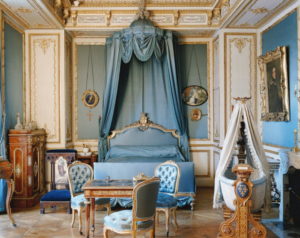
The private suites of the Duke and Duchess are located on the ground floor of the Petit Château. Decorated in 1844-46 by the Romantic painter and decorator Eugene Lami shortly after their wedding, they are one of the few suites dating from the July Monarchy that are still intact.

Note that they are only accessible in guided tours for small groups, so make sure you sign up on the Château’s website for a tour before heading off.
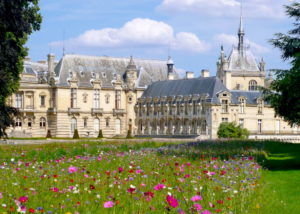
The gardens cover about 115 hectares, representing different fashions of gardening and landscaping over the centuries. The sumptuous 17th century French garden, created by André Le Nôtre, the landscaper of Versailles, provides the most stunning vistas of the Château and the parkland with numerous statuary, fountains, and water features. At 2.50km, the Grand Canal is 600m longer than that of Versailles.
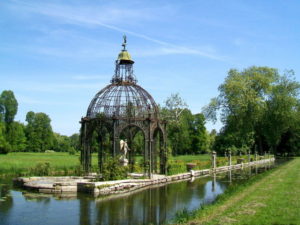
Don’t miss the 19th century English Garden, but particularly the Anglo-Chinese garden, which houses the Hamlet, comprising 5 little “rustic” cottages that served as a model for Marie-Antoinette’s Hamlet in the Petit Trianon in Versailles.
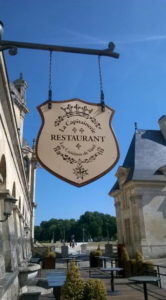
The former kitchens are now home to a restaurant called ‘La Capitainerie’, and there’s another cafe located within the Anglo-Chinese garden, where you can enjoy a selection of tasty treats accompanied by a lavish serving of the famous crème Chantilly, which was said to have been invented in the Château’s kitchens and first made its appearance during the Age of Enlightenment.
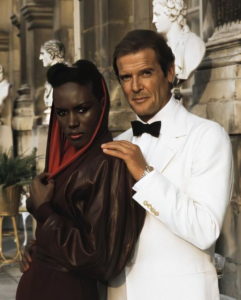
A more recent episode of Chantilly’s fascinating history you may recall is that the Château featured prominently in the 1985 James Bond film ‘A View to a Kill’, as the estate of evil Max Zorin. This character organised his annual horse sale at Chantilly, and of course, Bond, played by Roger Moore, posing as a rich dilettante interested in buying a race horse, infiltrated the event. Some of the interiors of the Château were used for a number of scenes, but of course it was the Great Stables that were the main event.
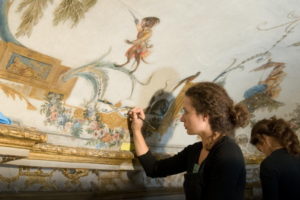
In 1998, and again in 2002, the World Monuments Fund placed a section of the Château on its Watch List due to water infiltration and high humidity. Eleven paintings were badly damaged, necessitating expert conservation. By 2000, six other works also needed similar conservation work. It turned out that the Château’s problems were quite widespread. The hydraulic system had stopped working and the water table was rising, endangering every building on the property.
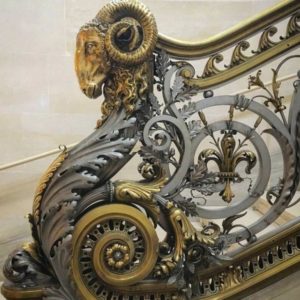
Over the years, specific projects have addressed the various needs of Chantilly, including the adaptive reuse of the Grand Stables, major roof repairs and restoration of wall finishes in the Grand Singerie. In addition to financial support, the WMF has supplied technical expertise and advice on the best, most appropriate conservation methods.
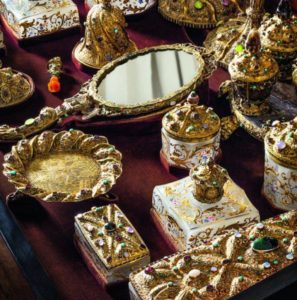
The Château de Chantilly is one of the finest jewels in the crown of France’s cultural heritage. Visitors can experience a strong sense of its original ambience, and a day spent here is guaranteed to be one of the highlights of your trip.
To get there, take the “transilien” (regional) TER train from Gare du Nord to Chantilly-Gouvieux, direction Creil. Trains depart from the Grandes Lignes (main lines) zone, platforms 9-18, and the journey takes around 25 mins. The direct RER trains (Line D) take about 50 mins. since there are 12 stops. From Chantilly-Gouvieux it’s a 25 min. stroll to the Château through the pretty town, or from the station you can take the no. 15 bus towards Senlis and alight at the ‘Chantilly, église Nôtre Dame’ stop and wait for the free (but somewhat infrequent) shuttle bus, or simply walk from there. Otherwise, taxis from the station take about 5 mins. Bike hire is also available at the station.
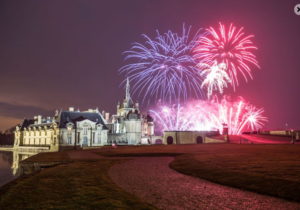


So much research! Particularly like the history.
Hi Nadine,
Glad you enjoyed it. It’s a favourite place, and so much to see, so it’s on the hit list when we’re allowed “out” again! I’d love to go when there’s a race meeting on–very like the British elite who do the rounds of county race meetings during the “season”, where it’s as much a fashion parade of the latest couture as about horse-racing. I’ve also always loved the story about the Prince who was sure he was coming back in a future life as a horse, so made sure he was going to be housed in the manner to which he was accustomed! Helps to be incredibly wealthy when you’re eccentric.
Can I go from Paris to Chantilly using just my navigo 1-5 if it is located 3 stops behind the birder of the zone 5?
Hi Kate,
If you mean that your stop is past the border of the outermost zone (Zone 5), no, you can’t use your Navigo. You can swipe your card at your departure station (Paris, for instance), but when you swipe it at your destination–which you usually have to do in order to pass out of the station’s barrier–it will not register. If an inspector happens to be on your train and you say what stop you are intending to get out at, he will inform you that you must buy an extension ticket, which these ticket inspectors can issue. However, you asked about getting to Chantilly using your Navigo. As I mentioned in the last paragraph of the blog, you can do this, as Chantilly-Gouvieux is inside the Navigo zone. Have another read of the story and you will see what you need to do after you get out at this stop in order to get to the chateau, if that’s what you are aiming for.
Kind regards, Cheryl